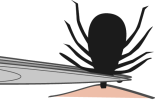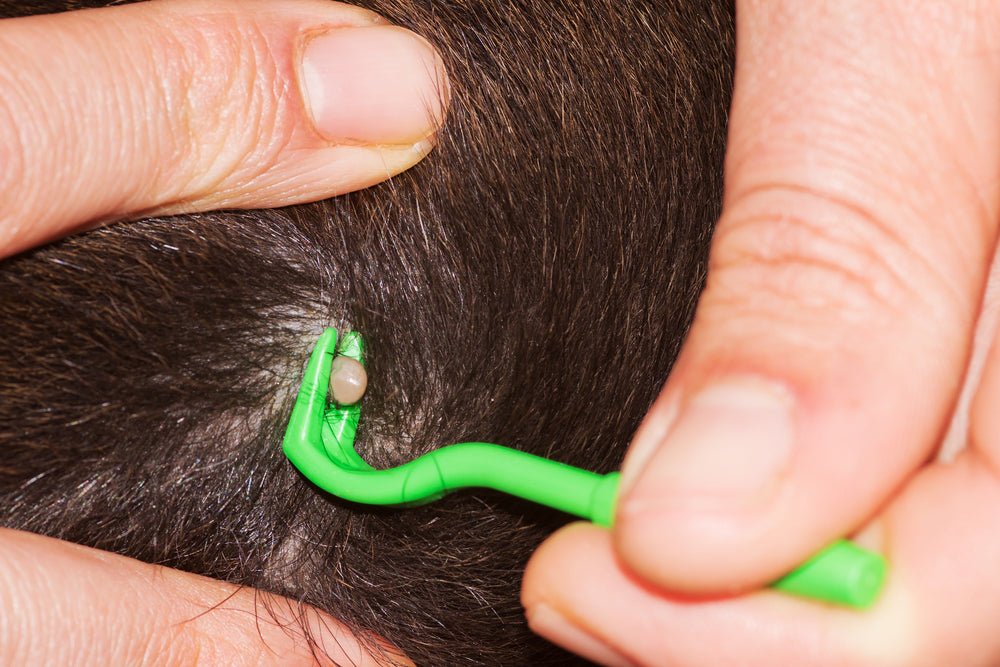Ticks and other Parasites
Spring and Fall are the seasons for all 4-legged creatures to enjoy wet and wonderful... and to come under attack! Any time the temperatures are still warm enough to climb above zero, our dogs are susceptible
to parasites like ticks and since our Ontario weather is all over the map, we still need to pay attention to potential parasitic threats in months like November and February.
There are many different parasites that can pose a threat to your pet. Fleas, ticks and lice, to name a few. All are blood feasting and all transmit disease. Fleas can transfer viral and bacterial disease to both humans and dogs. Ticks can cause all sorts of illness including Lyme, Ehrlichia, Anaplasma and Rocky Mountain Spotted Fever. Even if no diseases are transmitted, parasites can turn into infestations, both on the dog and in the house, in no time.
Obviously, with all of these problems, we want to prevent our dogs from acquiring any of these parasites. It is however, overwhelming to wade through all of the options to help protect our pets from these parasites.
To help with some of the preventatives on the market, we'll break them down into two major categories, chemical and natural.
Chemical Flea, Tick and Lice Prevention
- Advantage is a popular flea treatment, but only prevents fleas and lice. It does not repel ticks.
- Advantix provides treatment against fleas and ticks
- Revolution prevents flea infestation in addition to ear mites, mange, heartworm and ticks
- Frontline Plus prevents fleas and ticks
- Bravecto protects against fleas and ticks and lasts 12 weeks - it has also been tested on and shown to be safe with Collies who are MDR-1 Gene deficient
Natural Flea, Tick and Lice Prevention
What to do if you find an attached Tick
There are commercial products you can buy that help you remove ticks. Alternatively, you can use a pair of tweezers to pull the tick out. The goal is to remove the tick fully intact and not leave the head in your dog's skin. Squeeze the tweezers on the tick as close to the skin as you can and remove by applying gentle pressure straight up. Do not turn the tweezers as this may cause the head to dislodge. Do not pull sharply or straight out as this will likely cause the head to detach from the body and be left embedded in your dog. This can cause irritation or infection. Be aware of any method that may cause the tick to vomit before releasing - things like rubbing it with cotton or applying soap work, but these methods will often will result in the tick regurgitating before letting go and emptying toxins back into the host.
Once the tick is removed, you can kill it by crushing, flushing, closing in tape or drowning in alcohol (Vodka for example). Thoroughly cleanse the area the tick was removed from.
If you do accidentally detach the tick's head and leave it in the host, don't try to dig it out. This can actually increase the likelihood of infection. Instead, watch the area closely for signs of infection (rash or irritation) and let your dog's body naturally expel the foreign object. If you see signs of rash, irritation or your dog develops a fever, see your vet immediately.
Avoiding Ticks
The best option is to avoid densely wooded or areas heavy with long grass. Ticks don't jump, rather they grab hold of their hosts as they pass by. Sticking to areas with short mown lawns will help avoid some ticks. You can also use a spray that makes it difficult for ticks to grab hold of you or your dog or spray yourself with a bug repellent with DEET. Avoid DEET on your dog, but there are safe sprays like ICARIDIN you can use on them. Check your dog thoroughly with your hands or a flea comb after walks through forested areas to catch any ticks before they attach.
As always, Happy Training!
|
|
Hi! I'm Shannon and I joined the McCann team in 1999 while training Quincey, my wonderful and spirited Rottweiler, to have good listening skills. I'm the Director of Online Training and Content for McCann Professional Dog Trainers and I enjoy writing about dogs and dog training for the McCann blog. I currently share my life with 2 Tollers (Reggie & Ned) and I love helping people develop the best possible relationship with their 4-legged family members. |


